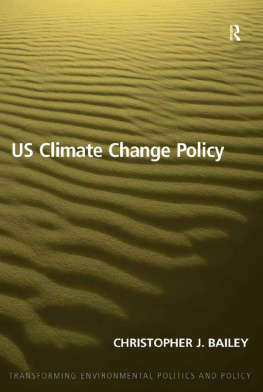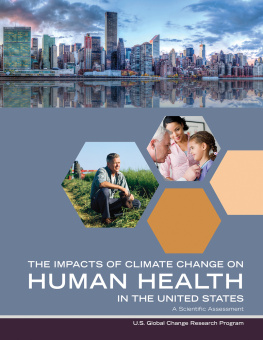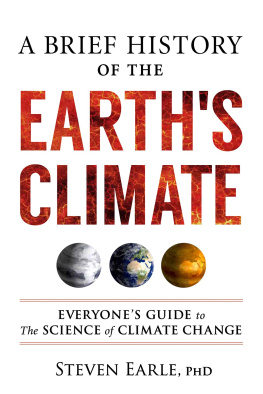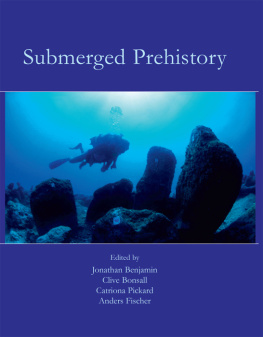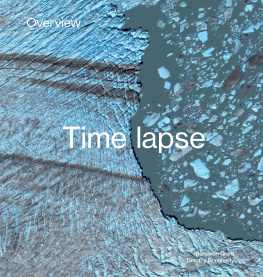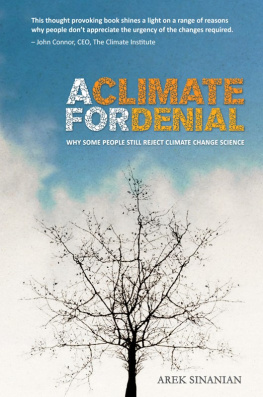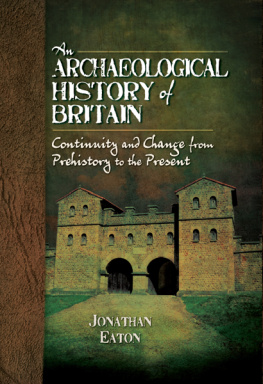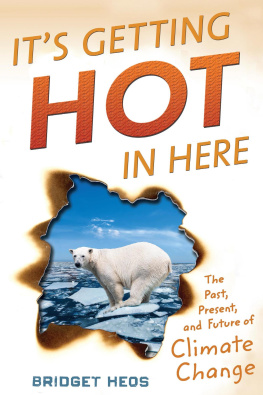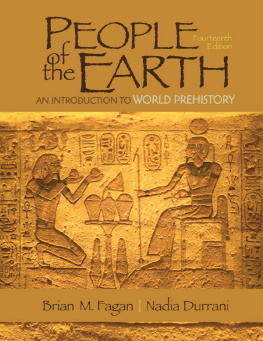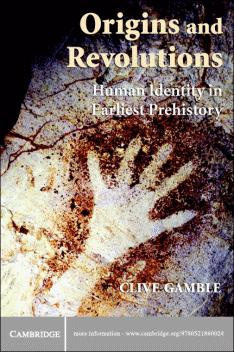Benjamin Lieberman - Climate change in human history: prehistory to the present
Here you can read online Benjamin Lieberman - Climate change in human history: prehistory to the present full text of the book (entire story) in english for free. Download pdf and epub, get meaning, cover and reviews about this ebook. publisher: Bloomsbury Publishing, genre: Romance novel. Description of the work, (preface) as well as reviews are available. Best literature library LitArk.com created for fans of good reading and offers a wide selection of genres:
Romance novel
Science fiction
Adventure
Detective
Science
History
Home and family
Prose
Art
Politics
Computer
Non-fiction
Religion
Business
Children
Humor
Choose a favorite category and find really read worthwhile books. Enjoy immersion in the world of imagination, feel the emotions of the characters or learn something new for yourself, make an fascinating discovery.

- Book:Climate change in human history: prehistory to the present
- Author:
- Publisher:Bloomsbury Publishing
- Genre:
- Rating:4 / 5
- Favourites:Add to favourites
- Your mark:
- 80
- 1
- 2
- 3
- 4
- 5
Climate change in human history: prehistory to the present: summary, description and annotation
We offer to read an annotation, description, summary or preface (depends on what the author of the book "Climate change in human history: prehistory to the present" wrote himself). If you haven't found the necessary information about the book — write in the comments, we will try to find it.
Climate change in human history: prehistory to the present — read online for free the complete book (whole text) full work
Below is the text of the book, divided by pages. System saving the place of the last page read, allows you to conveniently read the book "Climate change in human history: prehistory to the present" online for free, without having to search again every time where you left off. Put a bookmark, and you can go to the page where you finished reading at any time.
Font size:
Interval:
Bookmark:
Climate Change in Human History
Climate Change in Human History
Prehistory to the Present
BENJAMIN LIEBERMAN
AND ELIZABETH GORDON
Bloomsbury Academic
An imprint of Bloomsbury Publishing Plc

CONTENTS
The authors wish to thank our students in our classes on climate change in human history. This book owes a great deal to their enthusiasm and to their questions.
We would like to thank Academic Affairs at Fitchburg State University for helping us advance this project through sabbaticals.
We would also like to thank the staff of the Amelia V. Gallucci-Cirio Library at Fitchburg State University for their professional support in obtaining materials.
We would also like to thank Daniel Lieberman for comments and advice. Thanks, as well, to Isabel Lieberman for the photo.
We received very useful comments from external review that helped us to expand the scope of this book.
Finally, we thank Emma Goode and the editorial and production staff at Bloomsbury for their help at many stages.
Beginning 10,000 years ago, in a warming climate with ample water, farmers domesticated grains and expanded their fields. The growing surplus sustained a rise in population. Societies grew more complex: new towns and cities boosted demand for a wide range of artisans and specialists. The thriving economy enabled political and religious leaders to build elaborate palaces and monuments: pyramids, ziggurats, and even a sphinx. Complex societies and civilizations in other regions of the world followed much the same pattern as they emerged during a long warm phase after the last glacial maximum, popularly termed the ice age.
Consider a different climate trend: a once-fertile region dried out as prevailing winds shifted, taking away once reliable rains. Salinity in soil rose. The supply of food shrank. The surplus that once supported large cities vanished. The population moved away and, in doing so, abandoned urban complexes and the culture and society associated with their lost cities. Prolonged, severe droughts have already produced such outcomes, leading either to the collapse or the retreat of civilizations during the historic past, and megadroughts associated with climate change threaten to confront human societies of the present and future with severe challenges.
Yet another complex society faced a shift in climate. Heavier storms with more intense rains caused more frequent flooding and exacerbated the risk of famine. Colder winters lowered crop yields at higher elevations. Those living on the extreme margins in some cases abandoned their villages, but others turned to more efficient heating sources, and political authorities improved their ability to provide relief from dearth. Societies confronting past regional climate change along these lines have suffered losses, but in some cases have also adapted to shifts in climate.
Each of these scenarios displays the interaction between climate change and human history. In the first, a climate with favorable conditions for farming contributed to the rise of a flourishing civilization dependent on extracting a large surplus from agriculture. In the second scenario, a sharp shift in precipitation was so severe as to persuade people to migrate away from their homes. The third scenario exemplifies both the challenges that climate shifts can pose as well as resiliency and the ability to adapt to changes in climate. From before the start of human civilization to the present, climate has influenced human history in many ways. This book introduces and outlines the vital, complex, and often changing interaction between climate and human societies.
Scientific and historical methods
Historians have traditionally focused on a wide range of important historical phenomena to a much greater extent than climate. A conventional top-down approach to history describes the achievements and failures of leaders and elites; of prophets, emperors, kings, military commanders, presidents; or of towering figures who marshaled forces of protest. Modifying this focus on leaders, historians have adopted multiple approaches to recast history from other perspectives. Thus, entire fields focus on social history, economic history, and the history of gender. Some historians have reversed the top-down approach entirely to look at history from the grass roots or from the perspective of oppressed or marginalized groups. With a very few notable exceptions, however, historians until recently seldom emphasized the role of climate, instead implicitly assuming that the climate provided a general frame or base for other historical events and trends. With the surge in interest in climate research, historians over the last few decades have increasingly included climate as a significant influence on history.
With very few exceptions no historical event be attributed to a single cause. To take a few major historical events, neither the French Revolution, nor the rise of Hitler, nor the collapse of the Soviet Union stemmed from any single factor. Short of the most extreme natural disaster or catastrophe of warfare, almost any major event or trend arises from multiple causes. As this book shows, climate change has influenced human history in many fundamental ways, but it is also important to keep in mind that climate has interacted with other factors in affecting history. Thus we should focus closely on the effects of climate, but we do not presume that any shift in climate has determined a particular historical outcome without interacting with other causes.
Both history and climate science are evolving fields. This may seem more obvious in the case of climate science, but written sources remain scant or nonexistent for many human societies. Archaeology provides additional information, but in many cases the study of climate and human history has yielded more than one possible scenario. One well-known example is that of the demise of Viking settlements on the vast North Atlantic island of Greenland. Rather than present only one interpretation, this book seeks to make clear when research into climate and human history has yielded more than one interpretation or scenario. In many such cases, including the case of Greenland, ongoing research may strengthen or weaken scenarios or may create new models of the interaction between climate and human history.
Both climate science and historical research can build consensus while leaving or creating new areas for research and debate. Questions about the interaction between multiple powerful causes allow for the possibility of more than one plausible answer. However, both history and climate science have established many firm conclusions. On the side of history, we possess increasingly firm information on the timing of human migration. We know when major civilizations and human societies emerged, and in many cases we know when their power eroded. We can in many cases make good estimates of population, and we have a good grasp on the use of different fuel sources and on the emergence of new technologies. We also possess detailed political chronologies for many civilizations.
The historical record for investigating the effects of climate change is paradoxically both dense but also scant, depending on the time and place. Thus, we have far more direct evidence about certain societies, usually those that left writing and abundant physical sites, than about human societies that lacked writing or complex governments.
From the climate science perspective, we have integrated knowledge from several fields, such as astronomy, geology, and climatology, to understand the growth and retreat of ice sheets throughout the past 3 million years, and have established methods that allow us to measure air samples that date about half as far back. We have routine proxies from various geological records that lock in climate conditions at various times in Earths past, and emerging new trends in the field that will help address unanswered questions. We still see the Holocene, the last 11,700 years of Earths history, as a generally stable period with respect to climate, but have also begun to recognize short-term instabilities in the climate system that can influence human civilization. There is also an overwhelming consensus in the scientific community about the impact that human activities are having on our current climatea warming trend that is unprecedented since our ancestors first roamed the planet.
Next pageFont size:
Interval:
Bookmark:
Similar books «Climate change in human history: prehistory to the present»
Look at similar books to Climate change in human history: prehistory to the present. We have selected literature similar in name and meaning in the hope of providing readers with more options to find new, interesting, not yet read works.
Discussion, reviews of the book Climate change in human history: prehistory to the present and just readers' own opinions. Leave your comments, write what you think about the work, its meaning or the main characters. Specify what exactly you liked and what you didn't like, and why you think so.

